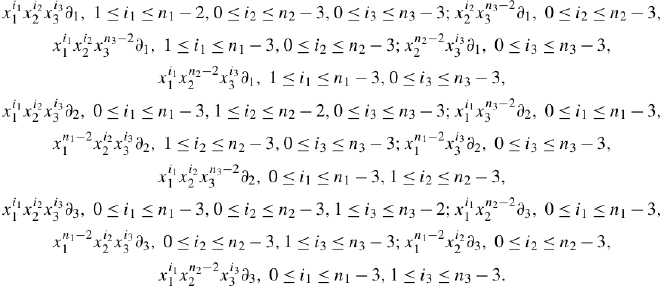In the series Typesetting TeXniques, we share our expertise as professional copyeditors and typesetters of mathematics. We frequently hear from authors that our work makes their papers better. This is how we do it.
You’ve likely seen displays containing clutters of mathematical expressions, displays in which the math is, at best, marginally more readable than it would be if left in the text. Most of the time, small typesetting changes, such as inserting some horizontal space or adding alignments, will significantly — sometimes dramatically — improve the readability of such displays. In the video at the end of this post, an MSP production editor efficiently makes these types of changes to a large display.
It might be very simple #
Sometimes, simply adding some space will enhance the readability of a display. For example, the displayed math
$$ f:X\to Y, x\mapsto y $$
will be easier to quickly parse with the addition of a \quad after the comma:
$$ f:X\to Y,\quad x\mapsto y $$
Or you might even replace the comma with text:
$$ f:X\to Y \quad{\small\text{ given by }}\quad x\mapsto y $$
It might be complicated #
Complicated displays often benefit from changes in line breaks and alignments, possibly in coordination with additional horizontal space.
The
video
features this “before” display:

This nine-line “before” display contains 15 expressions, each accompanied by one to three inequalities (this structure will become clear in the “after” display in the video). That adds up to more than a few places to change the code!
But change doesn’t have to be hard #
Making dozens (or more) changes to code for a large display could be onerous or, at best, tedious. However, someone skilled at manipulating text can efficiently modify code for displays of all sizes, as you’ll see in the video.
Watch the video #
Further reading #
The LaTeX Companion, 2nd ed. by F. Mittelbach and M. Goossens with J. Braams, D. Carlisle, and C. Rowley: Environments for displayed math provided by the amsmath package, including the {aligned} environment, are discussed in Section 8.2.
Header image by Devanath, available from Pixnio. Free to use under a CC0 license.